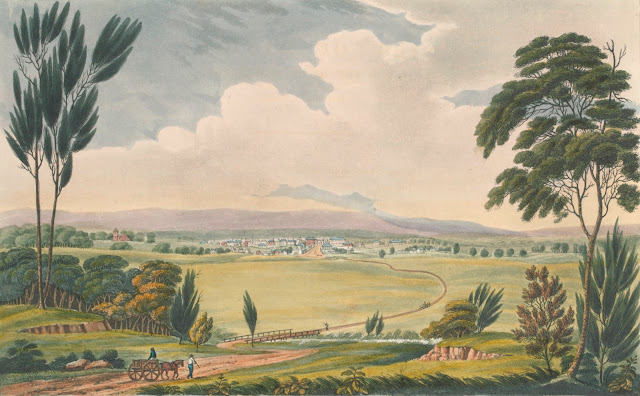Joseph Lycett (c. 1775-1828) was convicted of forgery and transported to Australia in 1814. During the period he spent in the colony Lycett recorded many aspects of the life and landscape of Australia.
Joseph Lycett arrived in Sydney on the General Hewitt in February 1814. He had been convicted of forgery at the Shropshire assizes on 10 August 1811 and had been sentenced to fourteen years in NSW. Lycett is described, in the records of the General Hewitt, as a portrait and miniature painter aged thirty-eight. He was granted a ticket-of-leave when he arrived in Sydney and was employed as a clerk in the Police Department. This indicates that he was literate and it is possible that his work involved copying letters and official documents - the usual occupation of the clerk.
Some fifteen months after his arrival in Sydney, Lycett was arrested and charged with passing false banknotes. He had manufactured the notes on a printing press and was once again convicted of forgery. He was sent to the penal settlement in Newcastle, a community of convicts who were either considered too hardened to be employed in Sydney, or who, like himself, had committed additional offences in NSW. Joseph Lycett was sent to Newcastle on the Lady Nelson in July 1815. He spent at least two years working for the regional commandant, Captain James Wallis, who had been posted to Newcastle following his arrival in Sydney with the 46th Regiment. Lycett, additionally, assisted with drawing up plans for the settlement's church, and also decorated its altarpiece.
Source: View of Windsor, Upon the River Hawkesbury, New South Wales 1824; Joseph Lycett 1774-1828; Published by J. Souter London; Courtesy State Library of Victoria








No comments